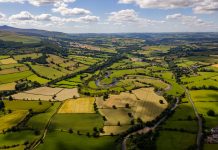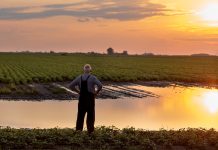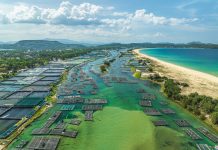If greenhouse gas emissions continue as they are, scientists warn that the climate shift will destroy one-third of food production regions on Earth
This study looks at what could happen to the food production capacity of the Earth, if carbon emissions continue to rise exactly as they are. The team at Aalto University found that over one-third of food production regions would lose their capacity when they calculated the impact of no change to climate policy.
Professor Matti Kummu, expert in global water and food issues at Aalto University, said: “Our research shows that rapid, out-of-control growth of greenhouse gas emissions may, by the end of the century, lead to more than a third of current global food production falling into conditions in which no food is produced today – that is, out of safe climatic space.”
The changes predicted in rainfall would impact food production in South and Southeast Asia, alongside the Sahel region of Africa. These areas in the Global South are the most vulnerable while simultaneously lacking the infrastructure to adapt their food production systems to survive this climate-shift. In some countries, the impact of climate change directly influences the level of HIV infections in children and young women. Research shows that individuals are forced to use their bodies as currency for scarcer resources, like food, medicine and water.
Doctoral Candidate Matias Heino, the other main author of the publication, commented: “Food production as we know it developed under a fairly stable climate, during a period of slow warming that followed the last ice age. The continuous growth of greenhouse gas emissions may create new conditions, and food crop and livestock production just won’t have enough time to adapt.”
Which countries would be hit by this change?
The researchers looked at how climate change would affect 27 of the most important food crops and seven different livestock, accounting for societies’ varying capacities to adapt to changes.
In 52 of the 177 countries studied, the entire food production capacity would remain in the safe in the future. These safe countries include Finland and most other European countries.
Again, the possible changes are most severe when it comes to the Global South. Countries such as Benin, Cambodia, Ghana, Guinea-Bissau, Guyana and Suriname will be hit hard if no changes are made.
Up to 95% of current food production would fall outside of safe regions. These nations also have significantly less capacity to adapt to changes brought on by climate change when compared to richer, Western countries. In the end, around 20% of the world’s crop production and 18% of livestock production under threat are located in countries without the ability to survive climate changes on a mass scale.
Professor Kummu further commented: “If we let emissions grow, the increase in desert areas is especially troubling because in these conditions barely anything can grow without irrigation. By the end of this century, we could see more than 4 million square kilometres of new desert around the globe.”











